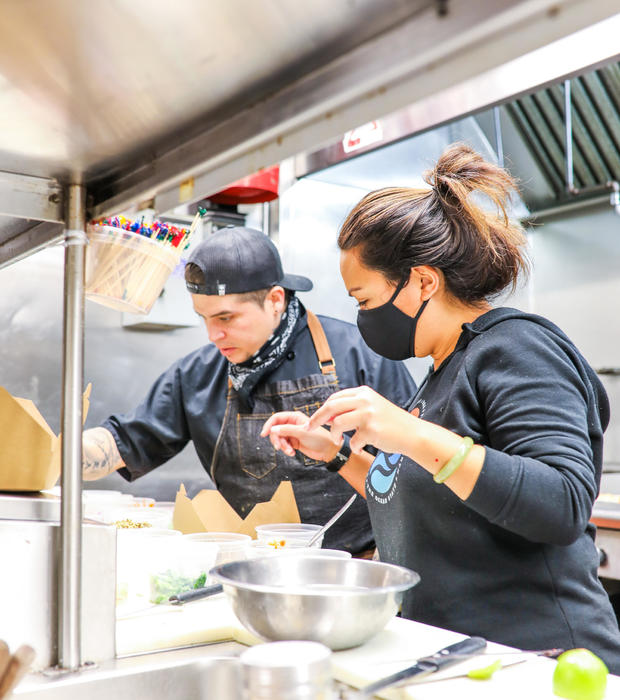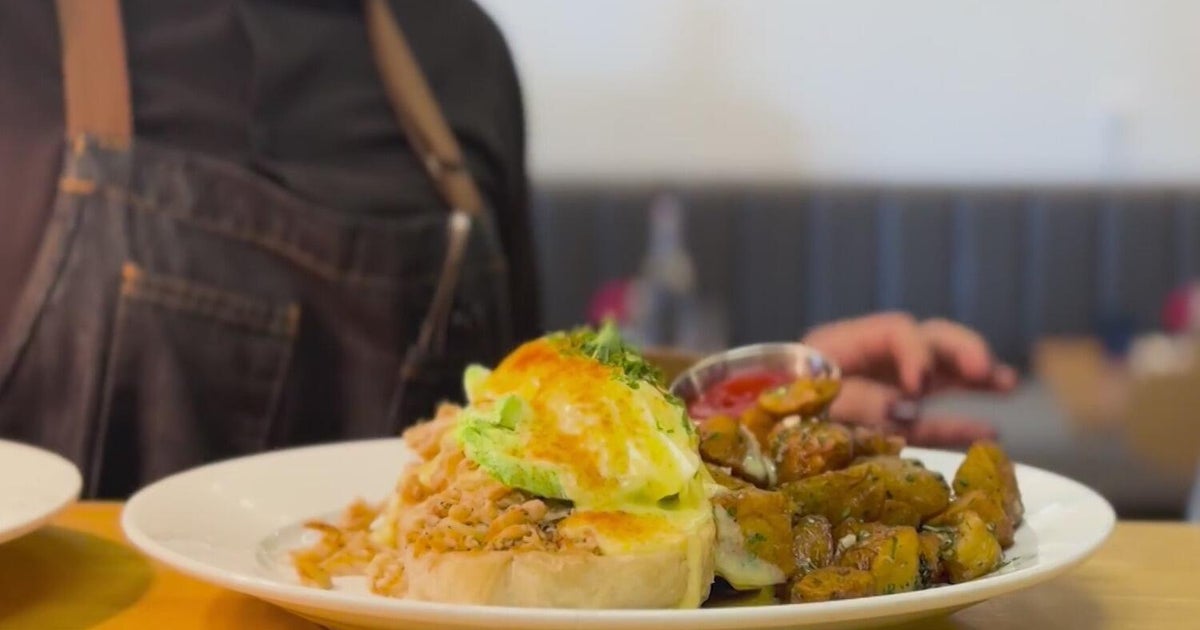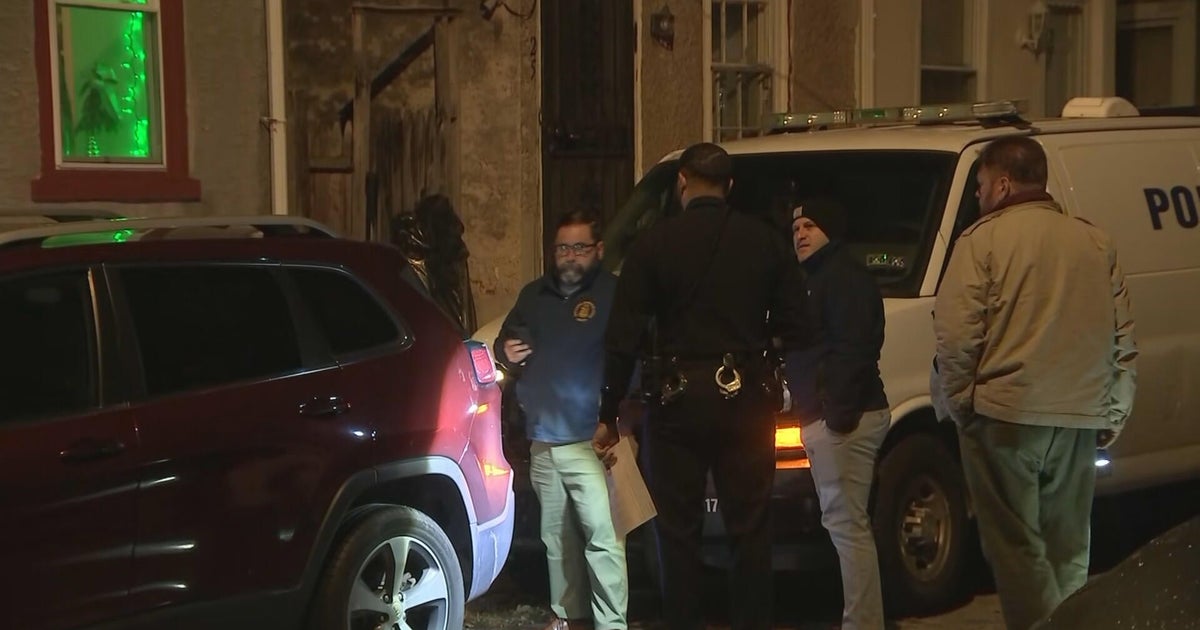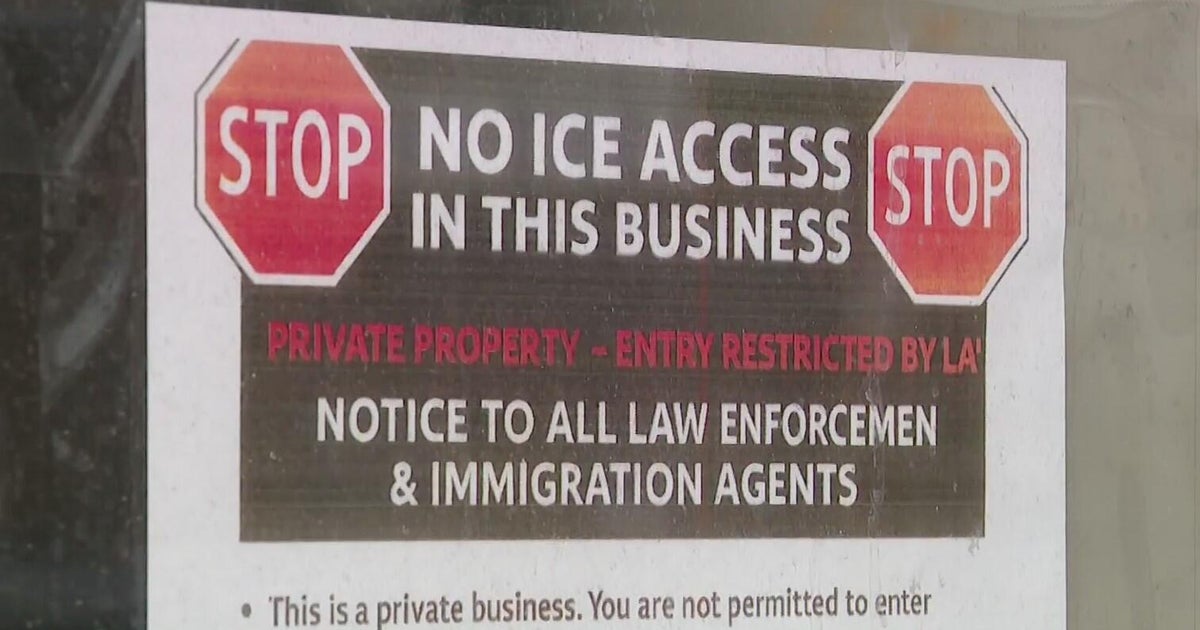Has COVID-19 killed restaurants? Not by a long shot
In the fiercely competitive world of restaurants, Danny Isaacs' career took off like a rocket. Shortly after graduating from the Culinary Institute of America in 2018 at age 20, he landed a plum job as a sous-chef at a Long Island yacht club in Long Island, New York. Half a year later, Isaacs moved up to executive chef at another nearby yacht club. Then COVID-19 hit. As the disease engulfed the state, the club closed. Isaacs was the first one laid off.
"My options were very, very slim. The only things that were open were hospitals, other institutional facilities," Isaacs recalled.
So in late August of last year, just as the pandemic was shuttering restaurants across the U.S., he took a chance, maxed out his credit cards and bought a food trailer. Within a few months the truck, dubbed "Bacon You Crazy," had a regular circuit: barbershops on weekdays, feeding the overnight shift at a hospital a couple of weeknights, and bars and breweries on weekends, when they were desperate to serve food on the premises to meet state pandemic restrictions on alcohol sales.
"I literally get phone calls from bars every single day, asking if I can spend a night there and sell food. Most of the time I have to turn it down," Isaacs told CBS MoneyWatch.
By the first weekend of March he bought a second food truck and started negotiating for a third, he moved the trucks from his parents' driveway into an overnight lot, helped his parents move to Florida and moved himself to a new apartment. Isaacs still works 12 hours a day, now with two former yacht club colleagues alongside him.
"It's a dream come true but it's so much work," he said.
As remarkable as Isaacs' story may seem, there are thousands like him. COVID-19 has decimated the food industry, closing more that 110,000 eateries, or 1 in 6 establishments, according to the National Restaurant Association. But thousands more are flocking into the field, according to data from Yelp and the Census Bureau.
Yelp data show that while restaurant openings plummeted during the peak of the pandemic last year, they bounced back quickly. In the last three months of 2020, the food-ordering platform added more than 18,000 new food businesses, on par with the previous year.
The surge has continued into 2021, with new food businesses launching at a much faster rate in January and February compared with the same period a year ago, according to Census Bureau figures. In the first two months of the year, Americans filed applications for 50,000 new food businesses, Census data show — nearly double the 10-year average.
Some of these restaurant owners are industry veterans for whom a layoff became a springboard to starting a new venture. Others are laid-off workers who are turning to a side hustle to make ends meet. And still others are entrepreneurs who've managed to hang on and are using a down market to grow their businesses.
"It's never been easier to get high-quality locations," said Dan Rowe, CEO of the franchise development company Fransmart. "We're writing more franchise deals right now than we have in years."
Retail apocalypse creates empty space
The biggest barrier to opening a brick-and-mortar restaurant is the cost: Building out the space and installing needed equipment can cost six or seven figures, not to mention still-hefty rent prices in major metro areas.
During the pandemic, such costs coupled with customers' continued aversion to indoor dining are driving a surge in mobile food businesses. Some 1,500 new food trucks have opened in the last three months of 2020, according to Yelp — 40% higher than the year-ago period.
The wave of closures has also created a glut of restaurant-ready retail spaces, spawning opportunities for entrepreneurs who have managed to stay open and who have some cash on hand.
"In the current environment, there are a lot of built-out restaurants where the heavy lifting is already done. So a lot of the infrastructure, which are the biggest costs of restaurants, is already there," said Steven Zagor, a restaurant consultant based in New York.
The excess of retail space has also softened up some landlords in formerly hypercompetitive areas, Zagor added. "Landlords have found themselves with empty spaces, some premium spaces, and are willing to negotiate."
Old shell, new tenant
For some entrepreneurs, the crisis has meant an opportunity to expand. Rather than fronting hundreds of thousands of dollars to build a business from the ground up, they are essentially creating a new business in the shell of the old.
Amelia Raley, who owns a vegan ice cream parlor in Austin, Texas, had been looking for a new restaurant space for about two years when she came across the perfect location across town — vacated by a pizza parlor that had closed in April. Raley and two business partners signed a lease in September and opened Big Nonna's, a vegan pizza joint, two months later.
"My romantic partner was really skeptical," recalled Raley, 38. "I said we were opening up a pizza shop, and he said, 'In a place where a failed pizza shop was?'"
But taking over an existing space allowed the business to open on a shoestring budget of about $30,000. "I don't think I could ever imagine opening a restaurant for this little money," Raley said. "Pizza was the one thing we didn't have to retrain customers on, where you order it and sit on your couch and eat it."
Forget the storefront
Many food entrepreneurs are avoiding the problem of real estate altogether by embracing delivery-only concepts. Delivery-only food businesses, sometimes called "ghost kitchens," are seeing the largest growth. Yelp added nearly 700 new delivery-only businesses in the last three months of 2020, more than double the number of the year-ago period.
Michelle Morgan, who has spent half of her 34 years working as a server or manager in restaurants, lost her job as general manager at the Paris Café when the downtown Manhattan institution closed last May. After spending the summer staying (and cooking) with friends in Newport, Rhode Island, Morgan decided to spin out her mother's home-cooking favorites into a delivery menu.
"Maybe I should just, like, dump some life savings into this — hey, take a gamble," she recalled. She hooked up with friends who were out of work, rented space in a Manhattan kitchen run by her former employer and in November opened Tiger Lily Kitchen. It delivers Asian-inspired foods such as grilled salmon with rice, vegan mushroom pho and summer rolls in hot-pink packaging.
Because she rents space from an existing kitchen, Morgan's insurance costs were low, and she has steadily expanded her staff from one chef to as many as five, depending on daily demand. Morgan, who has sunk about $35,000 of her savings into the project, hasn't broken even yet but is already on the hunt for a small storefront.
"It does ground you into a neighborhood and people will know that you're there. They know, and it's easy for them to find you," Morgan said.
Spicing up the mail
For Tamika Scriven, 32, starting a mail-order spice company has been a passion project. Two years ago, she switched to a vegan diet for health reasons and started a blog to help other transitioning meat-eaters. Last February, the blog added a side business selling spice mixes for $8 apiece, dubbed Hungry Munky. Scriven runs it along with her boyfriend, 27-year-old Michael Pacheco.
So far the business gets about five orders a month. Scriven hopes that number will increase as the weather warms up and she can market her wares at outdoor events and food festivals.
"The most challenging thing has been connecting with our clients, and figuring out who the audience is, too. That's not 100% clear yet," she said.
Food consultant Nancy Jo Seaton is seeing an increase in foodies starting to make their own food products. For first-time entrepreneurs, the biggest hurdle is scaling up for mass production.
"It's one thing to make it in your kitchen — it's another thing to actually bring that product to a manufacturer and have it come out the same. And that's a huge challenge," she said.
For now, Scriven said she's not stressing about the profitability of Hungry Munky. A part-time job at a tech company and another business selling custom-made wigs is keeping her busy.
"I'm not really doing it for profit. If we sell seasonings, that's great. But it's to help other transitioning vegans," she said.
For those banking on the survival of their food business, the risk of failure is very real.
"Post-pandemic, all bets are off the table. Even for successful operators that can't make a deal with their landlord, the failure rate is astronomical," said Zagor.
"The challenge has always been a lot of people get into it because it's seductive and it looks easy. It's not easy."










